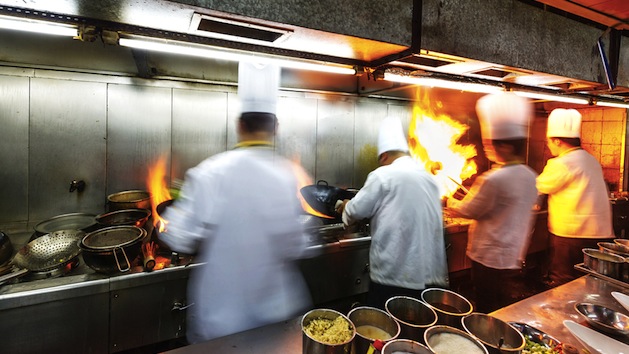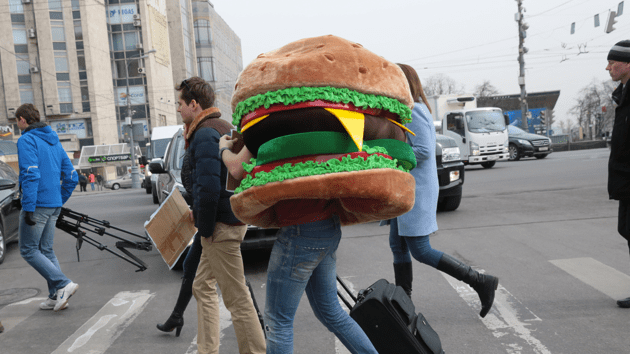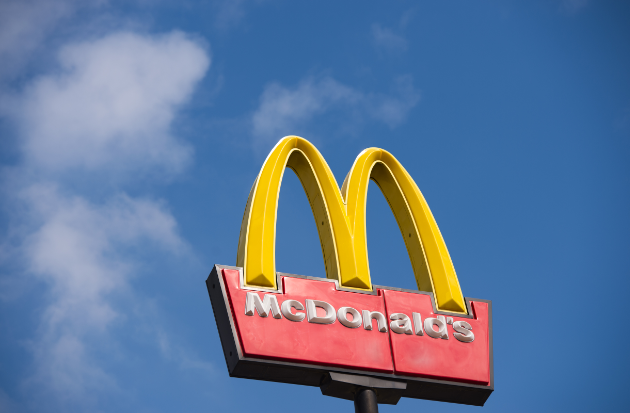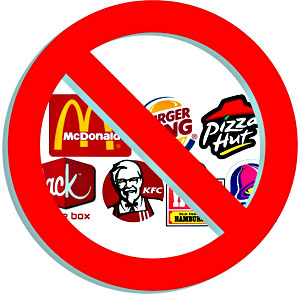On my very first shift after being promoted to line cook from busboy at a busy Texas steakhouse back in the ’80s, I watched a wizened colleague deftly transfer a catfish filet straight from a fryer basket to a plate using only his bare fingers. Bristling with teenage zeal, I attempted the same trick—earning a surge of pain and five raised welts (one for each finger tip) that troubled me for weeks. I learned several important lessons—about technique, calluses, and the wonders of tongs—and never suffered another serious burn in my near-decadelong career as a cook.
Kitchens seethe with danger: sharp (or, worse, dull) knives; fire; hot pans full of gurgling liquids; vats of boiling grease. Injuries are inevitable. In a properly trained and staffed outfit, however, they should be minimal. But as the above video shows, that’s not always the case. Made by the union-led Fight for $15 campaign, which aims to improve wages and conditions for fast-food workers, it depicts truly nasty conditions prevailing behind the scenes at a McDonald’s outlet.
And McDonald’s isn’t the only chain with worker safety issues. A new poll of 1,426 adult fast-food workers—1,091 of whom work in the kitchen “at least some of the time”—suggests that things are out of control in the nation’s fast-food kitchens.

Note that those numbers reflect the injury experiences of all the workers polled, even those who don’t work on the kitchen side of the operation. Among the approximately 1,100 kitchen workers polled, 75 percent reported having been burned multiple times over the past year. Among nonkitchen workers, 61 percent reported a burn in the past year, most often from handling hot liquids, the report notes. That 12 percent of respondents said they’ve been assaulted over the previous year suggests that security, too, is an issue in fast food outlets.
Now, these startling numbers raise the question of why the polled workers didn’t learn to navigate the dangers of the kitchen after one burn, like I did as a teen. Among the recent burn victims in the poll, 46 percent cited either “pressure from managers to work more quickly than is safe” or “having too few employees to handle the workload safely” as the main culprit of their injury. And 28 percent blamed either “missing or damaged protective equipment” or “broken or damaged kitchen equipment.”
The kitchen where I worked was amply staffed with experienced cooks and outfitted with functional equipment. According to this poll, those conditions don’t always prevail in our nation’s fast-food outlets.
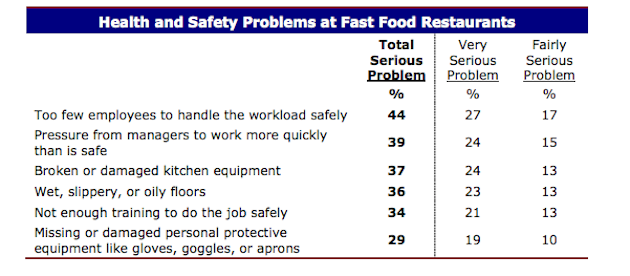
And when people get injured, it’s depressingly difficult to get decent treatment:
More than one-third (36%) of fast food workers report that their store is missing a basic tool of injury preparedness: a stocked, accessible first aid kit. In addition to the 8% who say their restaurant does not have a first aid kit at all, 19% say that the kit in their store is missing important items such as Band-Aids or burn cream, and 14% say the kit is located in a place inaccessible to employees such as a manager’s office or a safe.
Then there’s this jaw-dropper: “Incredibly, one-third (33%) of all burn victims say that their manager suggested wholly inappropriate treatments for burns, including condiments such as mustard, mayonnaise, butter, or ketchup, instead of burn cream.” (Sure, there’s a history of using mustard as a burn salve; but workers should at least have the option of reaching for medicated burn cream.)
For their trouble, fast-food cooks earn an hourly median wage of $8.87, according to the Bureau of Labor Statistics—a poverty wage. And contrary to industry dogma, fast-food jobs aren’t all about disposable income for teenagers. Around 70 percent of the industry’s workers are 20 and older; and more than a third are at least 25 years old. Crappy wages and unsafe conditions go together like burgers and fries; they’re symptoms of a food system that prizes zealous cost-cutting and shareholder profit above all else.

